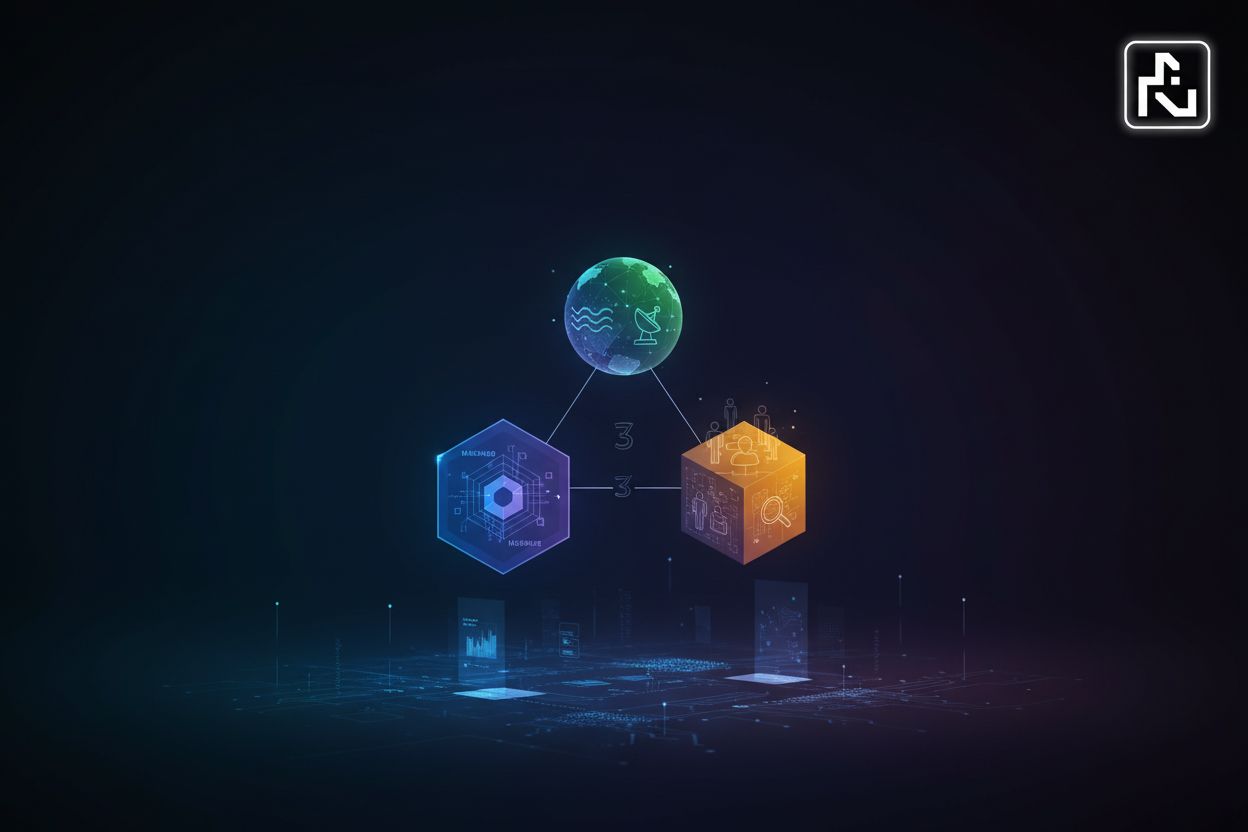Understanding Digital Marketing Strategies and Their Impact on Brands
TL;DR
The Evolving Landscape of Digital Marketing
Alright, let's dive into this evolving digital marketing thing... It's kinda like trying to hit a moving target, isn't it?
So, what is digital marketing, anyway? well, put simply, it's using online channels to get the word out about your brand. Think search engines, social media, email, and your website – the whole shebang.
- It's not just about snagging leads, though; it's about building a whole relationship with people. You want them to know, like, and trust your brand, right? That's where building awareness, fostering trust, and ensuring customer retention come in. We'll explore how to achieve these more deeply as we go.
Digital marketing didn't just pop up overnight. It's been morphing over the years. remember those clunky websites from the 90s? That was the start, with email marketing being the big thing.
Then came the early 2000s, and suddenly SEO and PPC were all the rage. Social media? That flipped everything on its head, with Facebook and Twitter changing the game. And now, we're in the age of mobile and ai, where personalization is king. It is all about figuring out what people want even before they do, it's a scary thought isn't it?
Here's the thing: digital marketing isn't just "marketing but on the internet." It's a whole different beast compared to traditional methods, and it's also a lot more measurable.
- Think about it: traditional marketing is like shouting from a rooftop. Digital marketing? It's like having a one-on-one conversation, even if you are just sending an email.
The cool part is that you can target specific folks, track how they react, and tweak your strategy on the fly. Traditional marketing? Not so much. Digital marketing is also generally more cost-effective, which is a huge win, especially if you are reading this for your small business.
As we move forward, we'll explore each of these points in more detail. Ready for the next step?
Core Digital Marketing Strategies: What Works Today?
Now that we understand how digital marketing has evolved, let's dive into the core strategies that are proving most effective today. You can have the fanciest website, but if nobody sees it, does it even exist? That's where having some solid digital marketing strategies comes into play.
So, what actually works today? Forget those old, outdated tactics. We are going to talk about what matters in this ever-shifting digital world.
You've probably heard it a million times, but content really is king. It's not just about throwing up blog posts, though. It’s about creating stuff that attracts and keeps customers around. Think of it like this: you're not just selling a product; you're selling solutions, insights, and entertainment.
- Blog posts are great for boosting website traffic, but don't stop there.
- Ebooks and whitepapers can position you as an industry expert, plus they’re fantastic for generating leads.
- Videos? Well, everyone loves videos. They're super engaging and can explain complex topics in a snap.
- Don’t forget infographics – perfect for those who want quick, digestible information.
In fact, blogs generate 55% more website traffic for companies, according to HubSpot. So, if you are not blogging, what are you waiting for?
The key is to focus on what your audience actually wants to know. What problems are they facing? What questions are they asking? Answer those questions, and you are golden. Also, plan it all out, using a content calendar is a great way to do that.
Social media is more than just posting pretty pictures, its also about building a brand and making people trust you. It's a chance to connect with people on a personal level, which can be a game-changer for your business.
- Use Facebook for targeted ads and engaging content – think quizzes, polls, and behind-the-scenes glimpses.
- Instagram is your visual playground. Stories, Reels, influencer collabs – it's all about showing off your brand’s personality.
- LinkedIn is a goldmine for B2B. Share thought leadership content and run targeted ads to reach professionals.
- Don’t underestimate X (Twitter) for real-time conversations and quick updates.
Influencer partnerships can be a game-changer. Find people who genuinely vibe with your brand, and let them do their thing. That authenticity is priceless. And don't just broadcast; get involved in conversations, answer questions, and build a real community.
SEO? It is not some magic spell, it's about making your website visible to the right people. If nobody can find you on Google, you are missing out on a huge chunk of potential customers.
- On-page SEO is all about quality content, smart keyword use, and those ever-important meta tags.
- Off-page SEO is where you build authority with backlinks from other reputable sites.
- Don’t forget technical SEO – site speed, mobile optimization, and all that behind-the-scenes stuff.
SEO is a long game, but it is worth it. Do your keyword research (think about what people are actually searching for), and create content that answers their questions.
According to Brightedge, 68% of online experiences begin with a search engine. That's huge!
Sometimes, you gotta pay to play. Paid advertising can get your brand in front of a targeted audience, fast. But it's not as simple as throwing money at ads.
- PPC (pay-per-click) is where you bid on keywords and pay when someone clicks your ad.
- CPM (cost-per-mille) is where you pay for every 1,000 impressions – good for building brand awareness. An "impression" is simply when your ad is displayed to a user.
- CPA (cost-per-action) is where you only pay when someone takes a specific action, like signing up for a newsletter.
Keyword strategy is crucial. You need to understand search volume (how many people are searching for a keyword), keyword difficulty (how hard it is to rank for that keyword), and CPC (how much it costs per click). Align your ads with what people are actually searching for.
Email marketing might seem old-school, but it's still one of the most direct ways to talk to your audience. It's like having a one-on-one conversation with thousands of people at once.
- Build your email list by offering something valuable in exchange for sign-ups – an ebook, a discount, whatever.
- Write compelling subject lines that make people want to open your emails.
- Personalize your emails – use their name, reference their past purchases, make it feel like it's just for them.
- Segment your audience and deliver content that’s relevant to their interests.
Experiment with A/B testing to see what subject lines, layouts, and calls to action work best. Keep your list clean, and don't spam people.
Let's say you run a small online clothing store. You could use content marketing to create blog posts about fashion trends and style tips. On social media, you could run contests and giveaways to boost engagement. With SEO, you could optimize your product pages to rank higher in search results. And with email marketing, you could send personalized offers to customers based on their past purchases.
These core strategies, when used together, can create a powerful digital presence for your brand.
So, that's the core of what works today. But it's not a "set it and forget it" kind of deal. You've got to keep learning, keep experimenting, and keep adapting to stay ahead of the game. Next up, we'll talk about how to measure the success of your digital marketing efforts.
Emerging Trends: Adapting to the Future of Digital Marketing
Okay, so you wanna know what's up and coming in the digital marketing world? Buckle up, because it's not just about slapping some ads online anymore, it's a whole new ballgame.
First off, let's talk ai and machine learning. Think ai is just some buzzword? Think again.
- ai chatbots are becoming the norm for instant customer support. I mean, who wants to wait on hold for an hour, right? This is a specific application of automated customer support, which broadly refers to any system that handles customer inquiries without direct human intervention.
- Predictive analytics is also a game-changer, allowing marketers to whip up super-targeted campaigns.
- And let's not forget automated customer support, because who doesn't love efficiency?
You can start diving in with tools like ChatGPT, HubSpot, or even Drift. It's not about ai taking over your job, it's about making your job easier, tbh.
According to Salesforce research, 60% of marketing executives think ai will have redefined marketing by 2025.
Ever talk to your phone and tell it to find something for you? That's voice search, and it's only getting bigger.
- Optimizing for voice search means focusing on long-tail keywords and local seo. Think about how people actually talk.
- Developing faq content is key, because people are gonna ask questions.
- And tools like answerthepublic? They're your new best friend for figuring out what those questions are.
So, how do you make sure your brand shows up when someone asks Siri where the nearest coffee shop is? That's the million-dollar question, isn't it?
ar and vr aren't just for gamers anymore; it's a whole new world of marketing.
- Imagine creating immersive shopping experiences with Augmented Reality (AR). Like, seeing how that couch looks in your living room before you even buy it.
- Virtual try-ons are becoming huge for fashion and beauty brands. No more lipstick smudges, yay!
- And virtual events, product launches, and tours? The possibilities are endless.
So, if you're not thinking about how ar and vr can amp up your brand, you're already behind.
Okay, let's get real, people are getting more and more worried about their data, and rightfully so. That's where blockchain comes in.
- Transparent ad tracking with blockchain is becoming a thing. No more shady practices, hopefully.
- Data privacy compliance with gdpr and ccpa is also non-negotiable these days.
- And peer-to-peer advertising networks based on blockchain? It's a whole new level of transparency.
Keeping up with these trends isn't just about staying ahead of the curve; it's about respecting your customers and building a brand they can trust. So, what's next? We'll delve into how to measure the success of your digital marketing efforts.
Digital Marketing for Different Business Types
Alright, so you're probably wondering if digital marketing is just one-size-fits-all, right? Well, not really, it's more like tailoring a suit – gotta fit the business just right.
B2B digital marketing is a whole different ballgame. Forget about those flashy, impulse-driven tactics. We're talking about building relationships, establishing authority, and, you know, not being boring.
Account-based marketing (abm) is where it's at. It's like having a laser focus on those high-value accounts, tailoring everything to their specific needs. Think personalized content, direct outreach, the works. This can be particularly effective for, say, a cybersecurity firm targeting major financial institutions.
Thought leadership content is your bread and butter. Whitepapers, reports, webinars – stuff that positions you as the go-to expert in your field. It's about sharing insights, not just pushing products. This is critical because, in B2B, prospects often seek in-depth content that provides solutions.
Demand generation is the name of the game, and it's all about getting your name out there. Think SEO, paid search, content syndication – anything to make sure you're top-of-mind when someone's looking for what you offer. Webinars and free trials are also useful here.
Social selling and networking on linkedin is also key. You can use platforms like LinkedIn to make connections and build relationships through thoughtful engagement and content sharing to generate warm leads and establish credibility
Marketing automation and lead nurturing are pretty essential. With marketing automation, you can segment, score, and nurture leads through drip campaigns, guiding them from awareness to conversion at scale
And here's a hot take: B2B doesn't have to be boring. It's still marketing, people! You can absolutely inject some personality and creativity into it.
Small and medium-sized enterprises (SMEs) have got a unique set of challenges, right? Tight budgets, limited resources – you gotta be smart about where you put your efforts.
Local seo is huge. Think Google Business Profile, local keywords – making sure you show up when someone searches "best pizza near me." It's all about getting visible where your customers are, and it will help to drive discovery and traffic.
Strategic use of paid channels is essential. For SMEs, this could mean running targeted social media ads on platforms like Facebook or Instagram, utilizing local search ads on Google, or even display advertising on niche websites relevant to your industry. You can't just throw money at ads and hope for the best, you have to go where your customers are active.
Email marketing with incentives is still surprisingly effective. Offer discounts, VIP events, product launches – anything to get people to hand over their email and opt in. As noted earlier, the importance of first-party data is growing.
User-generated content (ugc) is your secret weapon. Reviews, testimonials, social media shout-outs – it's all about leveraging the power of your happy customers. It helps boost a brand or get people taking.
Investing in tools and monitoring performance is key. It's not enough to just set it and forget it. You gotta regularly analyze campaign performance, refine your strategies. Even simple tools (e.g., email platforms, scheduling software) can help boost productivity, reach and impact
So, what's next? We'll dive into how to measure the success of your digital marketing efforts.
Measuring Success: Key Performance Indicators (KPIs)
Alright, so you've been pouring resources into digital marketing. How do you know if it's actually, you know, working? It's not just about feeling good; it's about seeing real results. That's where those key performance indicators, or KPIs, come in.
- Website traffic: This is kinda obvious, but are more people actually visiting your site? Are they sticking around? It's not just about quantity, is about quality too.
- Click-through rate (ctr): This measure how effective your ads are, so, if people aren't clicking, something's off with your messaging or targeting.
- Conversion rate: Are those clicks actually turning into sales, sign-ups, or whatever you want people to do? You need to see what percentage of visitors are taking the desired action.
- Social media engagement: Are people liking, sharing, and commenting? It's a great way to measure your brand and if they actually vibe with your brand.
- Return on ad spend (roas): This is the big one, are you actually making money from your ad campaigns? If not, time to rethink your strategy.
- Customer acquisition cost (cac): How much does it cost to gain each customer? Are you spending more than you're earning?
So, you're tracking all the right stuff... now what? Well, Google Analytics is a classic for website traffic and user behavior. Then there's social media analytics dashboards to see how your posts are doing, CRM systems to track sales, and data visualization tools to whip up some nice reports.
Don't forget, it's not enough to just collect the data; you gotta analyze it and actually do something with it. Now that we know how to measure success, let's look at some real-world examples of campaigns that nailed it.
Real-World Examples: Successful Digital Marketing Campaigns
Alright, so you're putting in the work with your digital marketing, but are you actually seeing results? It's not just about doing the things, but doing them well and learning from the successes (and, let's be honest, the flops). Let's look at a few campaigns that killed it.
Content, as we talked about before, is King. Salesforce is owning that, big time. They launched Salesforce+, a streaming service with live and on-demand content. Think of it as Netflix, but for business insights.
- This wasn't just some random idea; it capitalized on their extensive library of valuable content, which offered tips and resources.
- Turns out, a forward-thinking content strategy like this gets noticed – and awarded!
Absolut took a stand with their "Planet Earth's Favorite Vodka" campaign, using influencer marketing to champion a more progressive society and a sustainable planet.
- They didn't just grab any influencer off the street; they leveraged long-term partnerships to create an "activist army" for the brand. Smart, right?
- Experiential events were shared across Instagram and X, creating buzz and driving engagement.
- The results? Pretty impressive: over 68 million potential impressions, 7.7 million views, and 739.4k active engagements, according to Hello Partner.
Adidas is no stranger to clever marketing, but their email game is next-level. They are using ai to personalize their email marketing and it seems to be working.
- They use dynamic content driven by ai technology to match subscribers with the most relevant content.
- Data points like language, location, product interest, and purchase history come into play. AI uses these data points to select specific product recommendations, promotional offers, or even the tone of the email to ensure it resonates with each individual.
- The outcome? "Good engagement and open rates and much greater operational scalability," according to Robert Lochrie, Adidas VP of Digital Products.
So, what's the takeaway? These examples show that successful digital marketing isn't just about tactics; it's about aligning with your brand, understanding your audience, and using data to drive decisions.
Final Thoughts: Building a Brand for the Digital Age
Alright, so you've been throwing spaghetti at the wall, hoping something sticks in this digital marketing game. It's time for some final thoughts, right?
- Staying true to your core purpose is key. It's not just about what you sell, but why you sell it.
- Focus on the benefits, not just features. What real problems do you solve for people?
- You gotta know what makes your customers tick. Understand their pains, their dreams, all that jazz.
It's all about riding that wave, right? Social trends and economic shifts? They're gonna happen, so be ready to pivot.
- Follow the customer, not the other way around. They lead, you listen.
- And yeah, decent user experience across everything is a must.
Think about it like this: a healthcare provider could emphasize empathy and patient care through accessible online appointment booking and clear communication about services. A retailer could focus on convenience and personalized shopping—it is all about them! This could be achieved through a user-friendly website with easy navigation, personalized product recommendations based on browsing history, and streamlined checkout processes. Now, go build something awesome.




